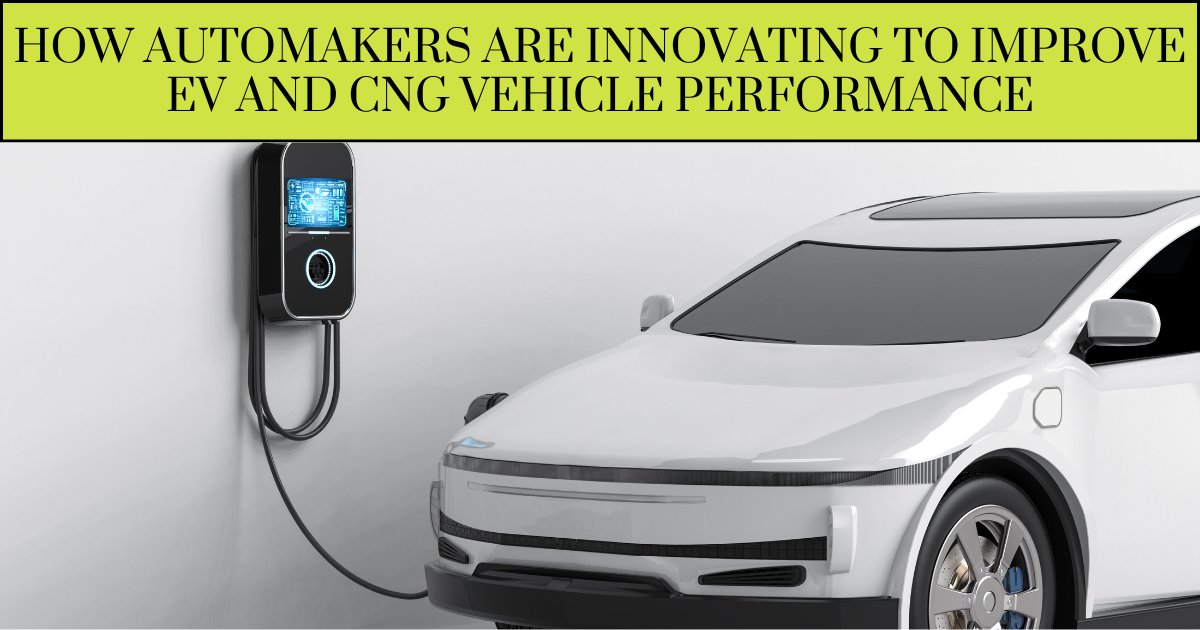How Automakers Are Innovating to Improve EV and CNG Vehicle Performance. Electric and CNG vehicles were introduced to provide people with an alternative source of transportation that is more affordable and environmentally friendly. Although with invention comes innovation. The automakers are still researching and experimenting with electric and CNG vehicles to make them better. To know more about the topic “How Automakers Are Innovating to Improve EV and CNG Vehicle Performance,” read the complete article.
How Automakers Are Innovating to Improve EV and CNG Vehicle Performance
As the costs of fuel are rising, consumers are facing a financial burden. Many have switched to CNG and electric vehicles to save money and the environment. The Indian automakers are increasingly embracing sustainable practices to improve electric and CNG vehicle performance. At the Society of Indian Automobile Manufacturers (SIAM) Annual Convocation, the Prime Minister, Shri Narendra Modi, noted the Indian Auto Industry’s efforts towards decarbonization through the introduction of vehicles with a range of powertrain technologies.

The government has set ambitious targets for EV sales: 30% of private cars, 70% of commercial vehicles, 40% of buses, and 80% of two- and three-wheelers by 2030. While India is making its growing influence in the global automotive landscape, automakers are expected to show their new models with a range of powertrain technologies across multiple price points, catering to different sets of customers at the expo, as the adoption of environmentally friendly cars is slated to gather pace in 2025.
As this revolution unfolds, several key trends are propelling the evolution of CNG and electric vehicles, driving innovation, and reshaping the automotive landscape. They are
Advanced Battery Technology
EV: Efforts to enhance EV efficiency continue with initiatives targeting faster battery characterization—cutting test times from six months to six days—and boosting motor efficiency from the current 60% to as high as 90%, thereby reducing energy use and battery size, he revealed.
CNG: One of the significant innovations is the introduction of hybrid CNG models, which mix the benefits of compressed natural gas with an electric motor and battery system. Optimizing engine combustion, reducing friction, improving thermal management, and developing turbocharged engines for better fuel efficiency and power.
Refuelling and Recharging
EVs need a crucial amount of time to recharge their batteries, ranging from 30 minutes for a fast charging station to several hours for a standard home charger. Fast-charging stations, wireless charging technology, and initiatives to deploy charging stations in urban areas and along highways are becoming the norm, alleviating range anxiety and promoting EV adoption.
CNG: One of the significant advantages of CNG vehicles is their quick refueling time. Expanding the refueling station network and enhancing the efficiency of fuel delivery systems. The electric motor assists the CNG engine during acceleration, while the CNG engine takes over during highway driving or when the battery needs recharging.
Design Innovation
EV: Design approaches such as topology optimization, monocoque and honeycomb structures, and multi-material strategies ensure strength with less material. Centralized ECUs and thinner wiring harnesses via higher-voltage systems are further slashing weight.
CNG: CNG tanks are designed to withstand extreme temperatures, impacts, and pressure changes, guaranteeing that the CNG remains contained even in the event of a collision. Another important safety feature is the use of specialized fuel lines and fittings that are designed particularly for CNG.
Sustainability Via Renewable Sources
EV: Evs play a pivotal role in reducing dependence on fossil fuels and enhancing energy independence. By exploiting renewable energy sources such as solar or wind power to charge EV batteries, countries can decrease their dependence on imported oil and create a more sustainable energy ecosystem.
CNG: Promoting the use of Renewable Natural Gas (RNG) offers improved fuel efficiency and reduced emissions. These advancements have led to an increase in engine efficiency, leading to better fuel economy and lower emissions.
Policy and Government Support
EV: Governments worldwide are implementing policies and providing incentives to promote EV adoption. Tax incentives, subsidies, and stricter emission regulations are encouraging manufacturers to invest in electric mobility.
CNG: The Indian government and various state governments provide incentives for adopting CNG vehicles to promote the use of CNG cars. Some states provide lower registration fees for CNG vehicles, while some regions offer tax exemptions or rebates for CNG vehicle owners. There are occasional subsidies on CNG kits for vehicles retrofitted to use CNG.
